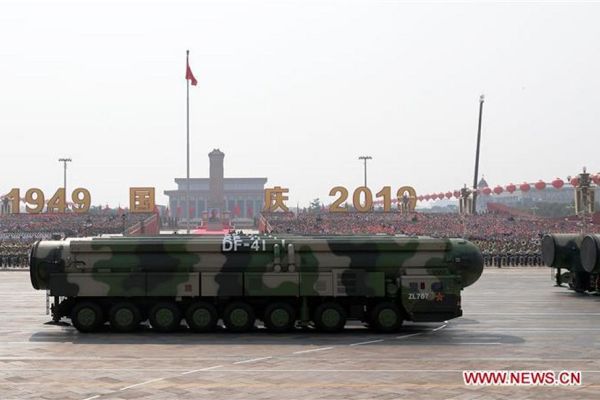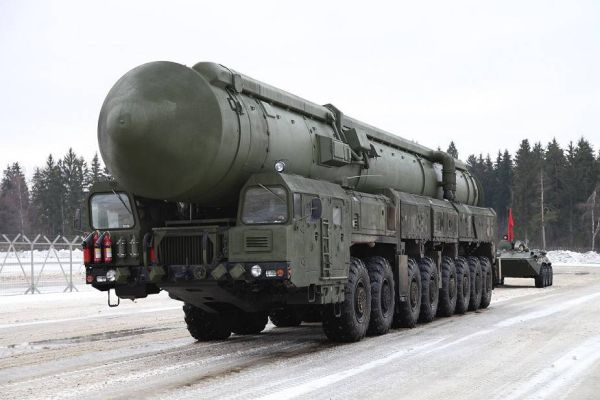ICBM Intercontinental ballistic missiles.
Hwasong-19 ICBM.

The Hwasong-19 is a North Korean intercontinental ballistic missile (ICBM) designed to enhance the nation’s long-range deterrence capabilities. Building on advancements in North Korea’s missile technology, the Hwasong-19 adds substantial range and payload flexibility to the country’s arsenal. Recently revealed through a state news broadcast by the Korean Central News Agency (KCNA), it is launched from an advanced 11-axle transporter-erector-launcher (TEL), the largest of its kind in North Korea’s arsenal. This TEL’s size and capability reflect North Korea’s ability to produce mobile platforms for heavy ICBMs, underscoring the nation’s commitment to expanding and diversifying its strategic missile forces.
Country users: North Korea
Description
The Hwasong-19 is a North Korean intercontinental ballistic missile (ICBM) powered by solid fuel, designed to provide an extended range and high payload capacity as part of North Korea’s strategic nuclear deterrent. As the latest addition to the Hwasong series, the Hwasong-19 incorporates solid-fuel propulsion, which allows it to be deployed more rapidly than liquid-fueled missiles, making it harder to detect and intercept. This ability to launch on short notice enhances its role as a second-strike weapon, further strengthening North Korea’s long-range deterrent posture.
Hints of North Korea’s capability to produce massive ICBMs were first showcased on 10 October 2020, during a military parade celebrating the 75th anniversary of the Workers’ Party in Pyongyang. In a grand display broadcast on state-run television, North Korea unveiled what analysts believe to be one of the world’s largest ballistic missiles. This missile, carried by an 11-axle truck, appeared during the climactic moments of the two-hour ceremony. The sight of this enormous TEL vehicle underscored North Korea’s growing sophistication in missile and vehicle technology, foreshadowing the development of the Hwasong-19.
On 8 September 2024, North Korea’s state-run Korean Central News Agency (KCNA) published images of a similarly configured 11-axle TEL during North Korean leader Kim Jong-un’s visit to the National Defense Industry Enterprise. Analysts believe this TEL was specifically designed for the Hwasong-19, emphasizing the missile’s size and weight. The increased number of axles in this TEL provides greater load-bearing capacity and off-road maneuverability, allowing it to support and transport the substantial Hwasong-19 across diverse terrains. This mobility enhances the missile’s survivability, as it can be moved and concealed quickly, reducing vulnerability to detection and preemptive strikes.
On October 31, 2024, North Korea conducted a test of the Hwasong-19, which it described as “an ICBM of ultimate version” and “the world’s strongest strategic missile.” During the test, the missile achieved a maximum altitude of 7,687.5 kilometers and traveled a distance of 1,001.2 kilometers. These test parameters highlight the missile’s formidable range and high-altitude capability, signaling North Korea’s ambition to position the Hwasong-19 as a premier asset within its strategic nuclear forces and a symbol of its advancing technological capabilities.
Hwasong-19 ICBM variants:
No variants at this time
Technical Data
-
Launcher Unit
The Hwasong-19 is transported and launched from an 11-axle TEL, the largest and most advanced launcher in North Korea’s arsenal. This TEL configuration increases load-bearing capacity, allowing it to support the substantial weight of the Hwasong-19 missile. Its large number of axles improves off-road mobility and stability, enabling the TEL to traverse varied and rugged terrains, which increases flexibility in missile deployment and reduces vulnerability to preemptive strikes.
-
Missile
The Hwasong-19 is a multi-stage, solid-fueled ICBM with an estimated range exceeding 10,000 kilometers, and potentially reaching up to 15,000 kilometers. Powered by solid fuel, the Hwasong-19 benefits from several operational advantages over liquid-fuel missiles, including the ability to be launched without time-consuming fueling procedures. This makes the missile more responsive and harder to detect, enhancing North Korea's ability to deploy it swiftly in crisis scenarios. The Hwasong-19 is designed to carry a high-yield nuclear warhead and may have the capability to deploy multiple re-entry vehicles (MRV), allowing it to deliver multiple payloads or decoys to evade missile defense systems. Alongside the Hwasong-18, which also uses solid-fuel propulsion and was first launched in 2023, the Hwasong-19 further strengthens North Korea’s long-range, solid-fuel ICBM capabilities, adding to the nation’s strategic deterrence.
-
Guidance System
The guidance system of the Hwasong-19 is believed to include an inertial navigation system with potential satellite-based guidance, which could enhance its accuracy over long distances. The missile may have basic in-flight maneuvering capabilities, especially during terminal re-entry, making it more challenging for missile defense systems to intercept.
-
Combat Use
The Hwasong-19’s design and solid-fuel capabilities make it a strategic deterrent and potential second-strike weapon, significantly extending North Korea’s operational range. With the mobility offered by the 11-axle TEL, the Hwasong-19 can be quickly relocated and concealed across various terrains, reducing its vulnerability to preemptive strikes and detection. By deploying alongside the solid-fuel Hwasong-18, the Hwasong-19 adds depth and flexibility to North Korea’s ICBM forces, enhancing its readiness and resilience against adversaries while underscoring the nation’s commitment to maintaining a credible, long-range deterrent.
Specifications
-
Type
Intermediate-Range Ballistic Missile (IRBM) / Anti-Satellite Weapon (ASAT)
-
Country users
North Korea
-
Designer Country
North Korea
-
Guidance System
Inertial guidance with potential satellite navigation support
-
Warhead
Likely single warhead; potentially nuclear or high-explosive conventional warhead
-
Launcher Vehicle
Transporter Erector Launcher (TEL), 11 axles road-mobile
-
Missile Weight
Estimated between 15,000 - 20,000 kg
-
Missile Speed
Hypersonic speeds, typically Mach 5-10 for IRBMs
-
Missile Range
Up to 15,000 km
-
Dimensions
Length: 13 to 16 m m; Width: ? m; Diameter: 1.5 to 1.8 m










































